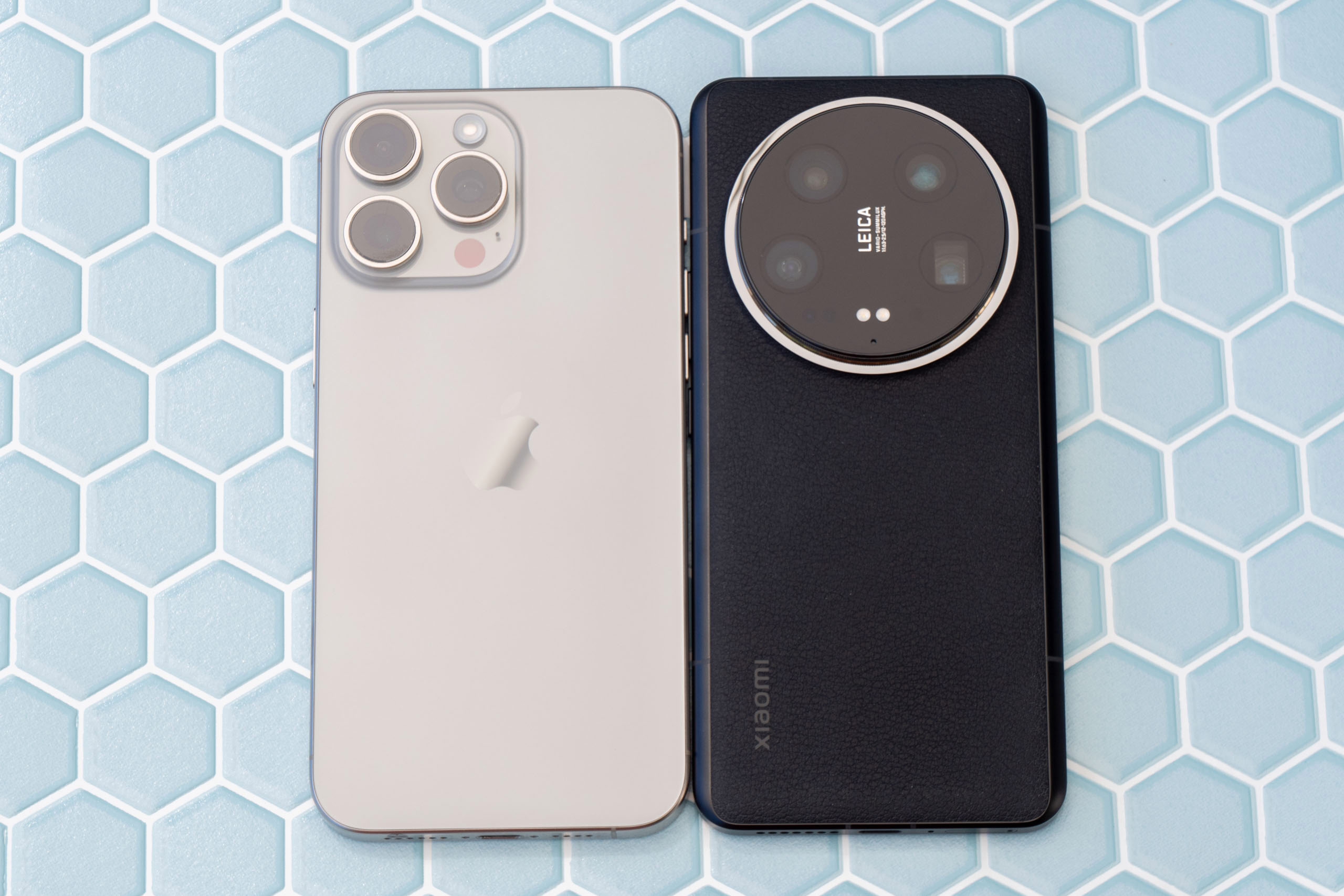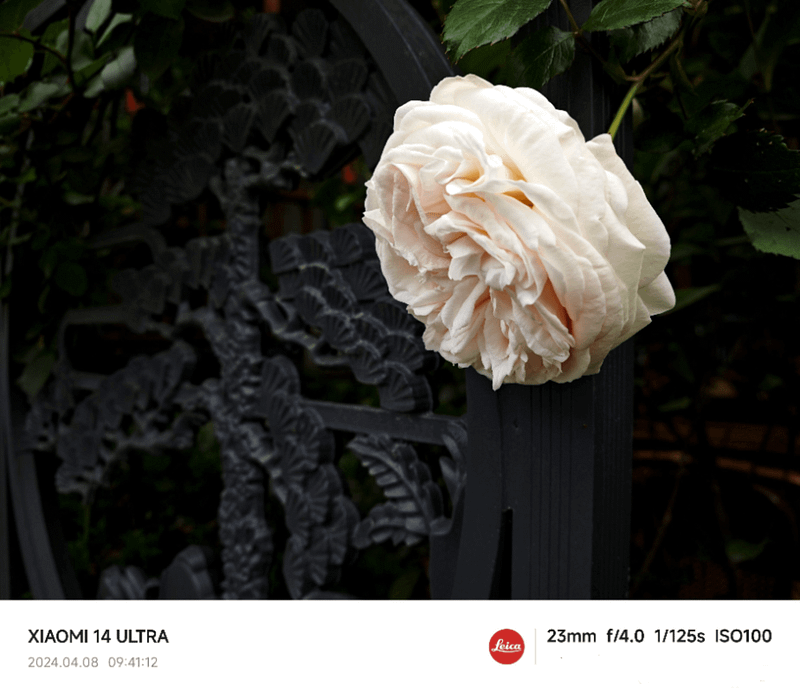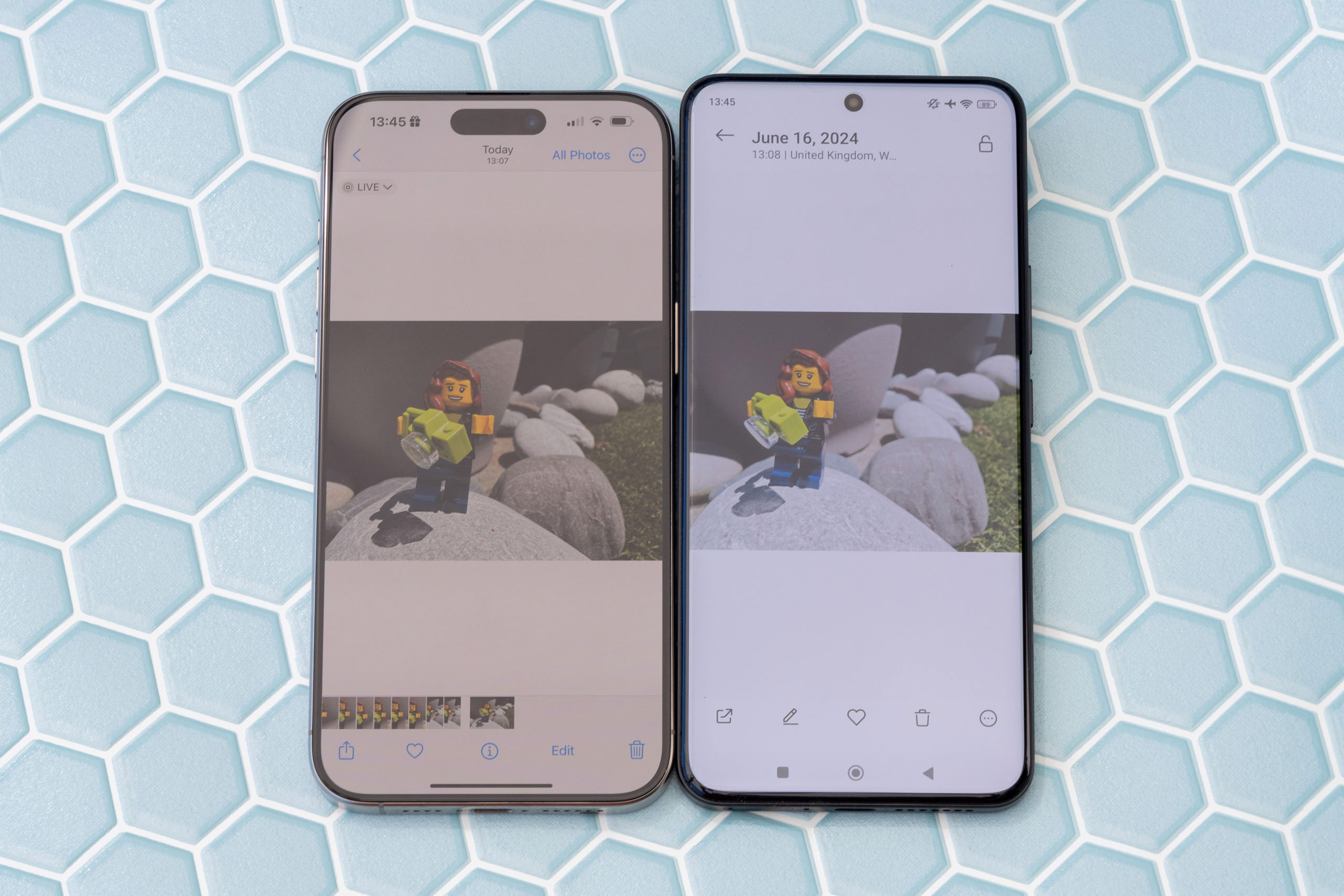
Although the latest iPhone is always likely to slot neatly into our list of the best smartphones for photographers, the competition at the moment is fiercer than ever.
One of the best models on the market right now is the Xiaomi 14 Ultra, which comes packed with a host of photographic features that are very tempting to those who crave the very best camera on their smartphone. But can it beat the iPhone 15 Pro Max?
All signs point to yes during our individual reviews of the two models, but what happens when we put them head to head – let’s find out…
>>>>>BP51 Battery for Xiaomi 14 Ultra
iPhone 15 Pro Max vs Xiaomi 14 Ultra: Camera specs
Both of these flagship models have excellent camera specifications for photographers, but it’s fair to say that – on paper at least – the Xiaomi has a superlative set up thanks to its quadruple 50MP sensors fronted by Leica-branded lenses.

Not only that, but the main 1x camera (23mm equivalent) has a variable aperture of f/1.6-4 (not something we usually see in smartphones) and also has a large 1-inch type sensor – something we also don’t usually see in smartphones. It is joined by an ultrawide (12mm, f/1.8), and two telephoto lenses (75mm, f/1.8 and 120mm f/2.5). All of the other sensors have a 1/2.5” sensor, while all of the lenses have Leica Summilux branding.
Meanwhile, the iPhone 15 Pro Max’s cameras look a little more pedestrian by comparison. There are just three cameras, with only one offering high resolution (48MP). This is the 1x – 24mm equivalent – f/1.8 lens. It is joined by two 12MP sensors, one with a 13mm f/2.2 ultrawide lens and one with a 120mm f/2.8 telephoto lens.

Both smartphones have selfie cameras – of course – with the Xiaomi 14 Ultra having a 32MP f/2.0 selfie camera, and the iPhone 15 Pro Max having a 12MP selfie camera. While the Xiaomi 14 Ultra’s is higher resolution, it doesn’t have AF (the iPhone’s does).
So it’s safe to say that here the Xiaomi is the overall winner, but what results will they deliver in real-world shooting…?
>>>>BP4R Battery for Xiaomi 14 Pro
iPhone 15 Pro Max vs Xiaomi 14 Ultra: Camera apps and shooting modes
As with many other Android models, the Xiaomi 14 Ultra has a much more comprehensive native camera app than the iPhone 15 Pro Max.
Along with a standard shooting mode, there’s an array of special modes. Some are fairly commonly found on most phones, such as “Night” mode for shooting in low light, but there are others which are a bit more unusual. The Portrait mode for example includes the ability to recreate the look of Leica lenses, rather than being a straightforward Portrait mode. It should be noted however that Leica recently introduced an app which allows the same for iPhone, so this is no longer strictly a unique selling point in the comparison.
Enthusiast photographers may wish to take advantage of the “Pro” mode which gives you a range of different shooting parameters which you can change, such as white balance, ISO, focus mode, shutter speed and if you’re shooting with the 1x lens, aperture. This is also where you can shoot in raw format if you wish.

(Left: iPhone 15 Pro Max Right: Xiaomi 14 Ultra)
By contrast, the iPhone’s native camera app has a little less going on. You still have a Portrait mode and various video options, but other things are missing. There is a Night mode, but it comes on automatically when low light is detected, it’s not something you can select yourself. There is no Pro mode, but there is the option to switch on raw format shooting from the main Photo mode.
An interesting thing to note here is that as well as the dedicated Photo mode, when the phone detects that you’re photographing a portrait subject (human, dog or cat), then it will automatically save the data needed to convert it into a portrait later on. This has been incredibly useful when quickly photographing such subjects.

(Left: iPhone 15 Pro Max Right: Xiaomi 14 Ultra)
So do we have a clear-cut winner here? That largely depends on what you’re priorities are. If you really want a Pro mode in your native app, then it’s the Xiaomi that wins, but if you’re happy enough to have a fairly simple app and download a more comprehensive one separately, then the iPhone is still a good shout.
>>>>BP4Q Battery for Xiaomi 14
iPhone 15 Pro Max vs Xiaomi 14 Ultra: General image quality


In this scene, both look great, but I’d say that the Xiaomi has more pleasing colours, while the iPhone shot has a slightly green cast. The same colour issue can be seen in the ultrawide shot too, although on the plus side at least the colours are matched between lenses.
Detail is good from both models, though it’s worth pointing out that the standard output from the iPhone is 24MP when using the standard lens, compared to 12MP from the Xiaomi, so there’s a little more potentially for cropping with the iPhone. Exposures are well balanced with both models, with both demonstrating a good blend of highlights and shadows.


When there’s artificial lighting present in a scene, both do a pretty good job. Here, the Xiaomi has corrected what the scene actually looked like to produce a pleasing result. The iPhone has kept things more accurate – the light looked yellowish in real life, but it could be argued that therefore the result is slightly less pleasing to look at.
We’ve got a bit of a tie-break situation here, with both producing excellent images in everyday conditions. It might be easier to pick things apart when looking a bit more closely at specific shooting scenarios.
iPhone 15 Pro Max vs Xiaomi 14 Ultra: Macro


If you’re into taking close-ups, both phones here have suitable modes to allow for that, and both put in great performance. It’s only the Xiaomi however which has a floating telephoto which has been specifically designed to create good macro images.
There are two ways to create macros using either phone. You can simply move your phone closer to the subject and the phone will automatically switch to the ultrawide lens. Or, if you want to fill the frame a bit more, you can also switch to the 5x lens.
In my test, the iPhone puts in a reasonably good performance when shooting with the ultrawide after automatically switching to it, but the Xiaomi’s is noticeably better, being cleaner and brighter. However, I have been extremely impressed by what the Xiaomi is capable of from the telephoto – here it blows the iPhone out of the water, producing an image which I think would be easy to pretend came from a “real” camera. It’s crisp where it needs to be, has plenty of detail, but also has a beautifully blurred background.


Here I have to give top marks to the Xiaomi, if you regularly shoot close-ups, I’d probably say it’s worth buying the Xiaomi for that purpose alone.
iPhone 15 Pro Max vs Xiaomi 14 Ultra: Screen and Design
Both of these smartphones are pretty large, with both having a 6.7” screen. The overall sizes of the phones are both reasonably close in size to each other, with the Xiaomi 14 Ultra measuring up at 161.4 x 75.3 x 9.2mm and 219.8g, and the iPhone 15 Pro Max coming in at 159.9 x 76.7 x 8.25mm and 221g. If you’re after a small phone, neither of these devices are going to be for you – but it’s hard to deny these large screens are great for viewing your photos on.

(Left: iPhone 15 Pro Max Right: Xiaomi 14 Ultra)
If you do want a smaller iPhone, you can opt for the iPhone 15 Pro (6.1” screen), which has most of the same specifications as the Max version, but the telephoto lens is only 3x, rather than 5x. Similarly, you can also get a smaller Xiaomi, in the shape of the Xiaomi 14 (6.3” screen), but here – among other things – you lose the fourth (telephoto) lens.
Size aside, the Xiaomi 14 Ultra has a 3200 x 1440 pixel screen with 3000 nits maximum brightness and a 120Hz refresh rate. This makes it higher resolution and brighter than the iPhone 15 Pro Max which has a 2796 x 1290 pixel screen with 2000 nits maximum brightness (it has the same 120Hz refresh rate). The difference isn’t hugely noticeable in real-world usage though.
Both are IP68 rated, meaning that they can withstand water and dust exposure. The Xiaomi has “Xiaomi Shield” for the screen, while the iPhone uses a “Ceramic Shield” – it’s hard to say exactly how these two compare, but either way, neither phone has succumbed to scratches while I have been using them.

(Left: iPhone 15 Pro Max Right: Xiaomi 14 Ultra)
In terms of design, the Xiaomi make some slightly odd aesthetic choices – but it does look a bit more like a “real” camera, with its large ring around the four lenses. The iPhone looks like, well, an iPhone. Some people feel these are aesthetically pleasing – but they’ve been a bit boring for a while now. Look at the pictures and decide for yourself which you prefer the look of.
Here I’d say it’s a bit of a tie when it comes to design. Both are large, both are high resolution, both have waterproofing. So, it might come down to which you personally feel is the more attractive of the two.
iPhone 15 Pro Max vs Xiaomi 14 Ultra: Battery life, charging and storage
The Xiaomi 14 Ultra has a 5000mAh battery and boasts both wireless charging and super quick charging (separate chargers will need to be bought, they don’t come in the box). It uses a USB-C connection, as is standard now. Meanwhile, the iPhone 15 Pro Max also fast charging and wireless capabilities – again you will need to buy a charger for that capability. Apple doesn’t disclose the size of its batteries but says that it is rated for 29 hours of video play back, which gives an indication that it’s probably reasonably close in size to the Xiaomi’s.
Either way, in real-world usage, both phones usually easily last a full day, even with reasonably heavy usage and spending a lot of time using the camera.

In terms of storage, the Xiaomi only has a 512GB option, which should be plenty for the average user. For the iPhone, you can go for a lower amount (256GB), or a higher amount (1TB), with price variations accordingly. For most photographers, the 256GB version is likely to be adequate – especially if you make use of cloud storage, but for content creators shooting video, the higher storage might be a better option.
iPhone 15 Pro Max vs Xiaomi 14 Ultra: Verdict
So after all that testing, what’s the conclusion?
It’s safe to say that both these flagship models are excellent for photographers, and despite high prices for both of them, represent good value for money considering the quality you get.
However, it has to be said that the overall trophy quite probably belongs to the Xiaomi 14 Ultra. It does extremely well in all areas, beating the iPhone in most of them quite easily. There are some caveats depending on what you like to shoot and how you like your images to look. Some might prefer the warmer tones of the iPhone for example, but it’s hard to deny that the Xiaomi keeps very close to accurate.

If you’re into macro photography, the Xiaomi is nigh-on perfection, while in some low light conditions, the iPhone’s inbuilt night mode seems to perform just a touch better than the Xiaomi’s – so if either one of those things is your bag, then it might sway you in either direction.
Of course, there will be many who simply prefer the look of one or the other, and many more who prefer using iOS compared to Android (or vice versa). If that’s you, then it’s likely to be hard to push you one way or the other, but if you’re OS agnostic, then certainly don’t dismiss changing sides.
As for cost – as mentioned, they are both expensive. However, like for like prices for both models when you consider storage makes the Xiaomi better value. That said, when it comes to resale, it’s probably fair to say that an iPhone will almost certainly hold its value better than the Xiaomi, so that’s something to consider too.
In the end, the answer is – as is so often the case – a solid “it depends”, but, if pushed to make a final decision on which is the best smartphone for photographers, I’d give it to the Xiaomi 14 Ultra.
Hello there, I discovered your website by the use of Google at the same time as looking for
a comparable matter, your site got here up, it appears to be like great.
I’ve bookmarked it in my google bookmarks.
Hi there, just turned into aware of your blog through Google, and located that it’s truly informative.
I am gonna be careful for brussels. I’ll be grateful
for those who continue this in future. A lot of other
people will probably be benefited out of your writing.
Cheers!
thank you